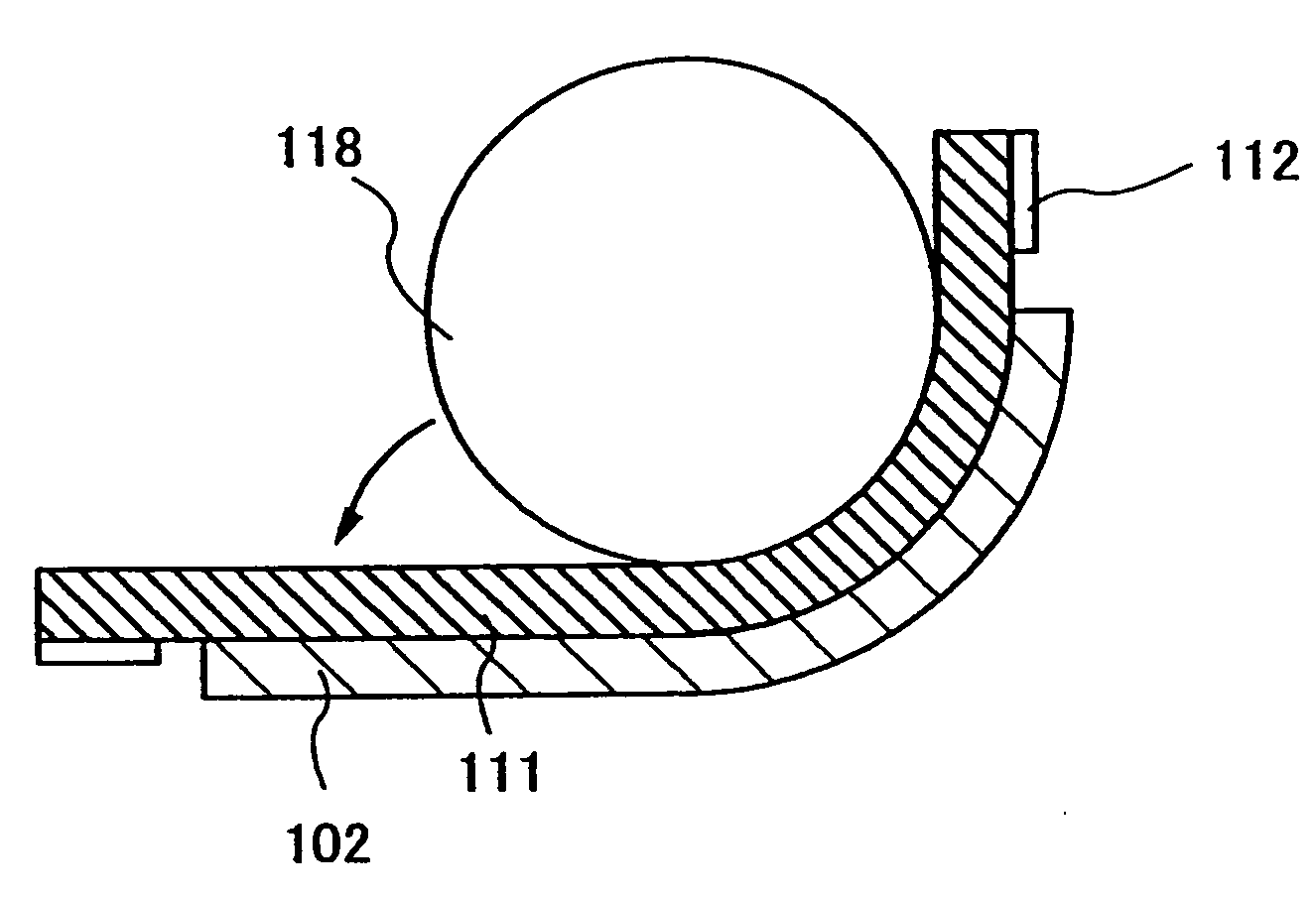Method for manufacturing semiconductor device
a manufacturing method and semiconductor technology, applied in the manufacture of electrode systems, electric discharge tubes/lamps, instruments, etc., can solve the problems of destroying semiconductor elements, deteriorating semiconductors or insulators, and not showing expected characteristics, so as to reduce electrical resistance, prevent potential from being increased, and reduce electrical resistance
- Summary
- Abstract
- Description
- Claims
- Application Information
AI Technical Summary
Benefits of technology
Problems solved by technology
Method used
Image
Examples
example 1
[0103]In this example, a method for manufacturing a semiconductor device capable of inputting and outputting data by noncontact, to which the present invention is applied, will be described. In this example, an element formation layer was provided with an integrated circuit which performs wireless communication using a 13.56 MHz signal and functions as an IC tag. This example will be described with reference to FIGS. 10 to 20, and 25 to 28.
[0104]As shown in FIG. 10, the release layer 101 was formed over the substrate 100, and an integrated circuit was formed over the release layer 101. A method for manufacturing the release layer 101 and the element formation layer 102 will be described with reference to FIGS. 25 to 28.
[0105]As the substrate 100, a substrate in which a glass substrate (a thickness of 0.7 mm, product name: AN100) made by Asahi Glass Co., Ltd. was cut to 5 inches on each side was used. As shown in FIG. 25, the release layer 101 had a multi-layer structure of a silicon...
example 2
[0132]In this example, a method for supplying the liquid 116, which is different from that described in Example 1, will be described. In this example, a method for spraying the liquid 116 in an atomized form is described and description of a common portion to that in Example 1 is omitted.
[0133]Similarly to Example 1, steps which have been described with reference to
[0134]FIGS. 10 to 13 are performed. Next, in Example 1, the plastic tweezers were inserted into the peeled lower surface of the element formation layer 102, and the gap 115 was generated between the upper surface of the release layer 101 and the lower surface of the element formation layer 102, as shown in FIG. 14. In this example, this step is unnecessary.
[0135]Next, the roller 118 is rolled on the heat release film 111 similarly to Example 1, and the element formation layer 102 with the heat release film 111 is peeled from the release layer 101. When the roller 118 is rolled, the liquid 116 in an atomized form was spray...
example 3
[0141]In this example, a method for supplying the liquid 116, which is different from those described in Example 1 and Example 2, will be described. Description of a common portion to that in Example 1 is omitted. In this example, a method for supplying liquid by separating the element formation layer 102 from a substrate while the substrate is being immersed in the liquid 116 is described.
[0142]Similarly to Example 1, steps described with reference to FIGS. 10 to 14 are performed. Next, as shown in FIG. 23, a container 140 which contains the liquid 116 is prepared. In the container 140, the substrate 100, the release layer 101, and the element formation layer 102 are immersed in the liquid 116. The substrate 100 is put in the container 140 so that the heat release film 111 comes on the top.
[0143]In this state, as shown in FIG. 24, the roller 118 is rolled on the heat release film 111, and the element formation layer 102 with the heat release film 111 is peeled from the release laye...
PUM
| Property | Measurement | Unit |
|---|---|---|
| temperature | aaaaa | aaaaa |
| thickness | aaaaa | aaaaa |
| resistivity | aaaaa | aaaaa |
Abstract
Description
Claims
Application Information
 Login to View More
Login to View More - R&D
- Intellectual Property
- Life Sciences
- Materials
- Tech Scout
- Unparalleled Data Quality
- Higher Quality Content
- 60% Fewer Hallucinations
Browse by: Latest US Patents, China's latest patents, Technical Efficacy Thesaurus, Application Domain, Technology Topic, Popular Technical Reports.
© 2025 PatSnap. All rights reserved.Legal|Privacy policy|Modern Slavery Act Transparency Statement|Sitemap|About US| Contact US: help@patsnap.com



